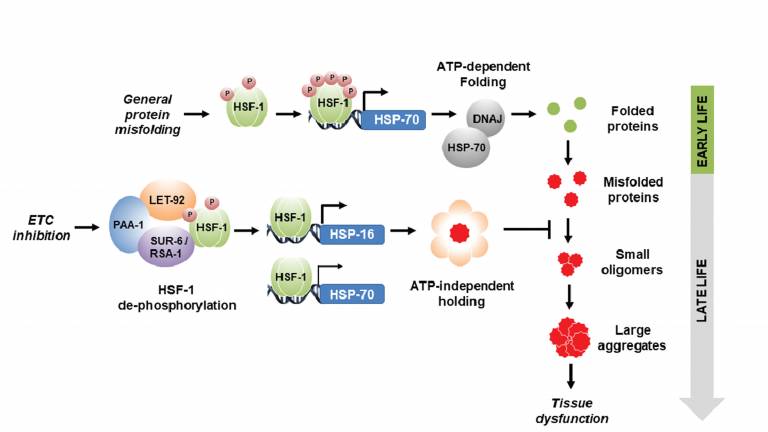Labbadia paper provides a mechanism for how mitochondria promote healthy tissue function with age
3 September 2020
A new Developmental Cell paper from John Labbadia’s group reveals how mitochondria remodel protein quality control networks to protect the ageing proteome and maintain tissue function in aged animals.

It is well-established that severe mitochondrial dysfunction is associated with age-related tissue dysfunction later in life. Conversely, a mild reduction in respiration during development can promote longevity in worms, flies, fish and mice. This is attributed to the activation of protective cellular responses within mitochondria and the cytosol, both of which protect the ageing proteome. However, it was unknown how mitochondria communicate with cytosolic factors to suppress ageing.
Using the worm Caenorhabditis elegans as a model system, Rhianna Williams et al. demonstrate that in response to developmental electron transport chain impairment, HSF-1 activity is re-modelled in adulthood by the PP2A complex. This results in the preferential up-regulation of small heat shock proteins, thereby protecting the cytosol against the accumulation of mislocalised and aggregated proteins. By finding ways to pharmacologically manipulate PP2A activity, it may be possible to suppress a range of age-associated protein conformational diseases.
Full article at: https://www.sciencedirect.com/science/article/abs/pii/S1534580720305463?via%3Dihub
 Close
Close

